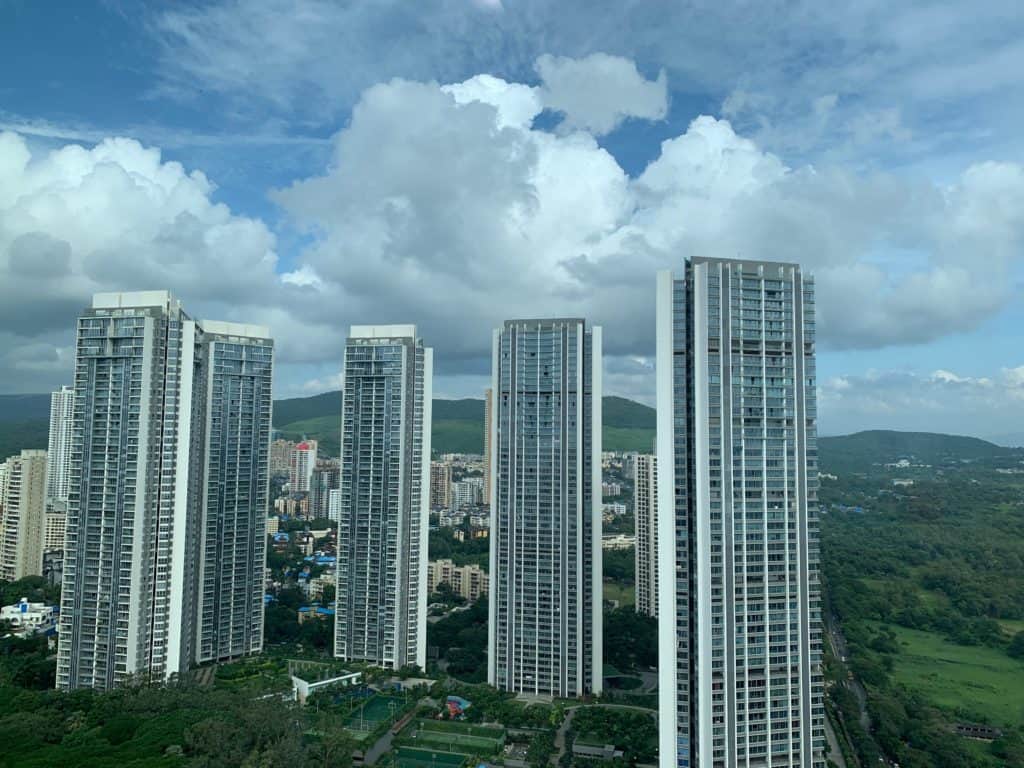In 2018, 30,000 slum dwellers from the Tansa pipeline area and those affected due to the Brihanmumbai Stormwater Disposal System project were moved to Mahul, an industrially polluted area in the east of Mumbai. After uninterrupted citizen protests from August 2018 to September 2019, the High Court ordered the Maharashtra Government to rehabilitate residents or pay them Rs 15,000 monthly rent and Rs 45,000 deposit to find accommodation elsewhere.
For a city known for incomplete or uninhabitable slum-redevelopment projects, this sounded like an interesting move. If implemented, it wouldn’t have been different from the model of “housing choice vouchers” where the government, like in the United States, pays a housing subsidy to a landlord and the renter pays the difference.
On the surface, the idea of housing choice vouchers sounds like a welcome break from recurrent news cycles about slum-residents waiting for their turn to live in safe and sanitary housing. But the choice comes with many complications.
Affordable housing in Mumbai
Popularly understood as “price that’s five times a household income”, affordable housing in Mumbai is a pipe dream. A most recent housing project in Goregaon pegs affordable flats at Rs 30 lakhs. That amount is “affordable” only to those with a household monthly income of Rs 50,000.
Despite the price-reality mismatch, successive governments in Maharashtra have planned to build and sell “affordable” houses through state bodies like the Maharashtra Housing and Area Development Authority (MHADA) or schemes such as the Pradhan Mantri Awas Yojana (PMAY).
It corroborates the political underpinnings in the long history of housing in Mumbai. Shiv Sena rode to power in Maharashtra in 1990 on the promise of flats to slum dwellers but to date, only 200,060 of over 8 lakh flats have been allotted across the city. Often in the city’s polluted periphery like Mahul, Govandi or Mankhurd, these allotted flats are in cruelly designed buildings with no thought to ventilation or sunlight.
The state’s imagination of housing is to sell flats, not rent them. There’s sufficient rental housing in Mumbai’s formal market but affordable rental housing is only available in slums with unsatisfactory conditions.
A successful rental housing model, driven by vouchers or otherwise, would mean that instead of living in make-shift, cramped homes in bastis, people could rent rooms in a building where they pay according to their incomes, while government funding meets the difference.

Under housing choice vouchers, the voucher amount is fixed by the government after considering factors such as family size and annual income. And finding suitable housing is the job of an individual or a family. As independent flat owners might supply the housing, the programme can only work if they are willing to rent to voucher holders.
Housing choice vouchers vs rent control
“Housing vouchers is definitely a better idea than rent control,” Vaidehi Tandel, Junior Fellow, IDFC Institute, a think tank, says. Tandel’s research finds that rent control laws, which freeze rents to protect tenants, can distort the rental housing market.
“A scheme like housing vouchers is better because you’re not burdening the landlords. In fact you are creating incentives for them to build and let out housing. You can subsidise the tenant while allowing landlords to make a decent income out of it,” she says.
Housing vouchers are meant to allow low-income renters to find decent housing in neighbourhoods that they couldn’t otherwise afford. But its run in the United States shows that landlords are known to routinely discriminate against black renters.
In Mumbai, too, housing vouchers could get enmeshed in concerns of religion and caste. “If low-income residents tried to rent flats in a mid to high-income housing complex in Mumbai, they could face strong resistance from residents,” Sairama Raju Marella, architect and urban planner, says. Mumbai’s housing societies are known for being insular and it’s not unimaginable that they would be hostile towards low-income residents.

Marella illustrates his worry with the example of the Karnataka Affordable Housing Policy, 2016, which mandates that new buildings reserve 10% of their stock for affordable housing, which could then be rented (rent fixed by the urban local body) out. But not even one project has taken off in Karnataka, Marella says. Builders worry that they will not be able to sell their gated-society vision if a portion of the flats are given to low-income residents.
Along with deep-seated religion, class and caste biases, Mumbai might also have the problem of not having enough housing stock. According to a report by Knight Frank and Khaitan and Co, 15.30% of all residential housing stock in Mumbai is unoccupied. But these also include high-income, spacious houses that voucher holders will not be eligible for.
So can new housing stock be funded and built for rental housing?
Other options
In 2008, the Mumbai Metropolitan Regional Development Authority (MMRDA) launched the Rental Housing Scheme where they built 160 sq-ft flats with the intention of renting. But there was limited planning on who it would be allotted to or how they would maintain the housing units, according to an IDFC report authored by the institute’s project team. Eventually MMRDA decided to sell these flats.
“MMRDA had no capacity to be a rental management agency,” Tandel says. For rental housing to succeed as a model, it would need an agency to take up multiple responsibilities: from who would be a renter, to the rent amount, to daily upkeep. “If you think of rental housing in a public-private partnership sense,” Tandel explains, “it’s like someone building the housing stock in exchange for Floor Space Index (FSI) and handing it to a parastatal body or an NGO whose role is of management.”
In the United Kingdom, this is called social housing. The rents in these social homes are pegged to local incomes. Those dealing with homelessness, overcrowding, or disrepair of existing homes can apply to be connected to a “social” home.
Mumbai has a vast demand for affordable housing but without increasing supply, interventions are useless. In the United Kingdom, local government themselves or in partnership with non-profits or community-focussed for-profit organisations build houses that are managed by non-profit housing organisations.
A collaboration with the private sector can also be explored. Cities like Hyderabad, Surat, and Bengaluru have hostels and dormitories that are rented out to blue-collar workers but Tandel’s research finds that these hostels and dormitories are often imposed with regulatory burdens and commercial taxes if they want to operate formally. This shoots up the rent.
“Housing vouchers without supply-side interventions are not going to work,” Tandel says.
Can employers pay workers’ rent?
Housing has historically been considered a responsibility of the employer. Mumbai’s chawls, now hidden from the city’s skyline, were built by mill owners to accommodate the many workers who were arriving from outside the city. At some point, this responsibility was replaced with a petty House Rent Allowance (HRA). But a recalculation of HRA is needed to bolster the fight for affordability.
Along with employers, “improving affordable rental housing needs to be a concentrated effort focussed on a variety of constituents,” Professor Amita Bhide, Dean, School of Habitat Studies, Tata Institute of Social Sciences, says. This includes students, workers in manufacturing, working women, patients of chronic diseases, to name a few. “Housing could be built and operated in partnership with say, hospitals or employers,” she adds.
An acceptable solution in smaller cities, Tandel is unsure if it would scale in a metropolis like Mumbai. “A few large businesses may be able to do it,” she says, “but remember that most enterprises and businesses in the country, more than 90%, are very small and will not be able to afford it.”
A majority of enterprises in India employ people informally, which means they’re not on a roster and therefore receive no HRA benefits. Government assistance will have to reach them directly.
Typically, the question of financing low-cost housing keeps the needle stuck, but there can be ways to wriggle out funds.
“There are unutilised government funds lying in government fixed deposits,” Sai Ramaraju Marella says. “Thousands of crores of Building and Other Construction Workers Welfare Cess has been collected for construction workers. But the labour department doesn’t know how to spend it.”
Increasing HRA, building housing to rent, or providing housing vouchers – these solutions are neither simple nor conclusive. But as generation after generation inherits an unaffordable housing landscape in Mumbai, it may be time to make room for newer ideas.